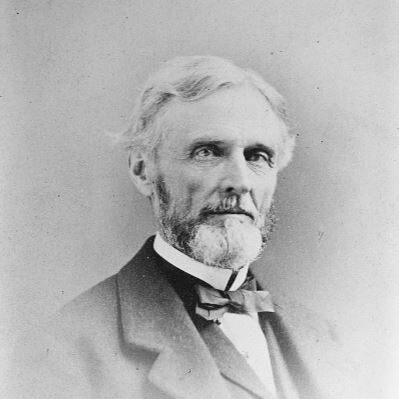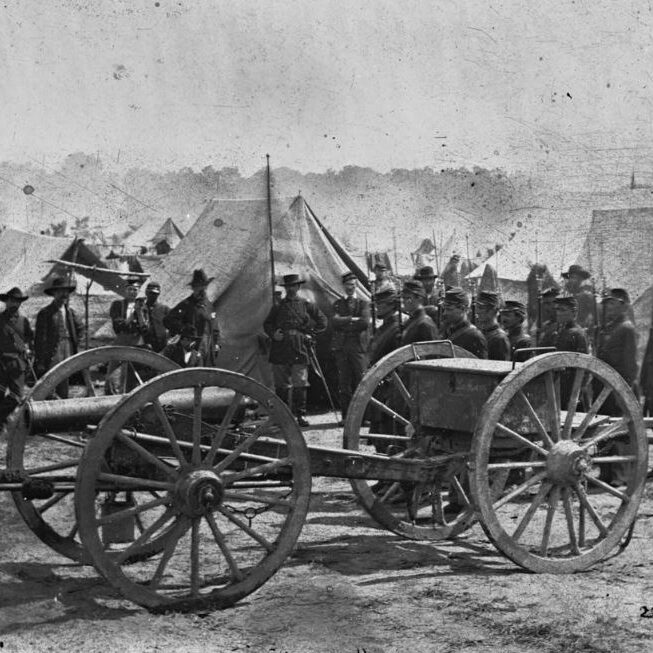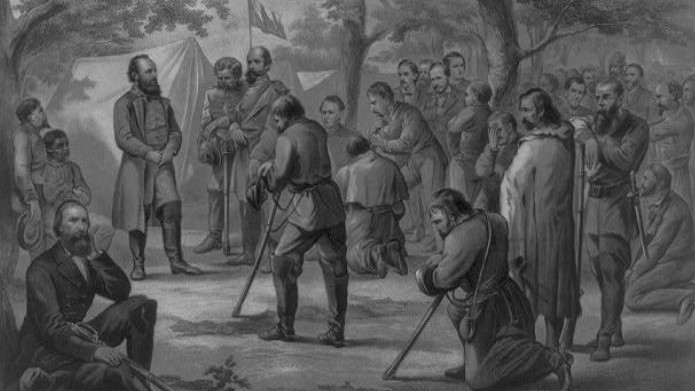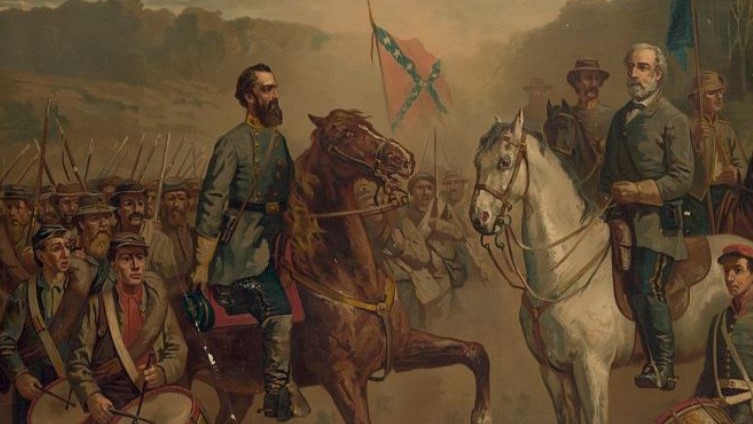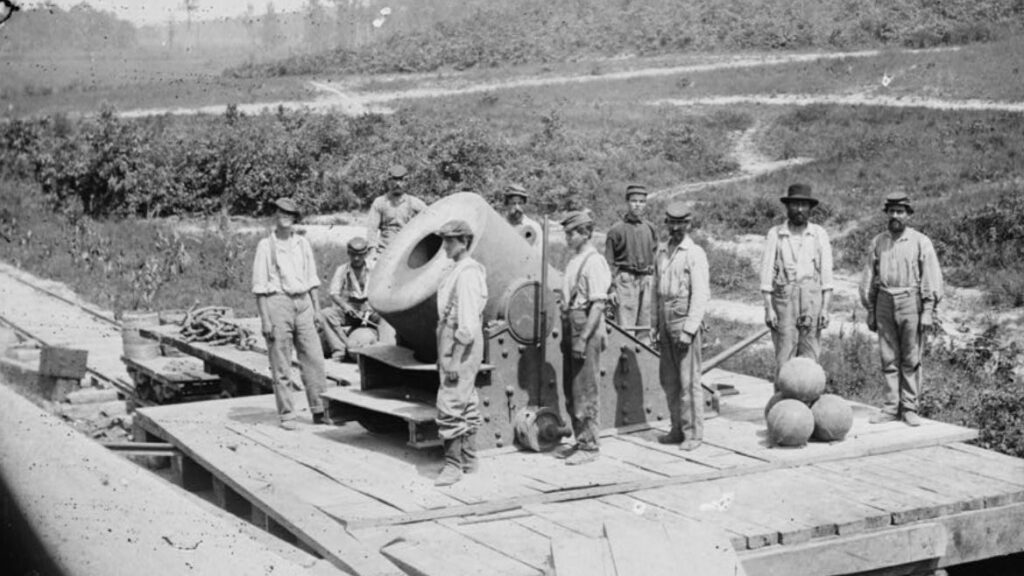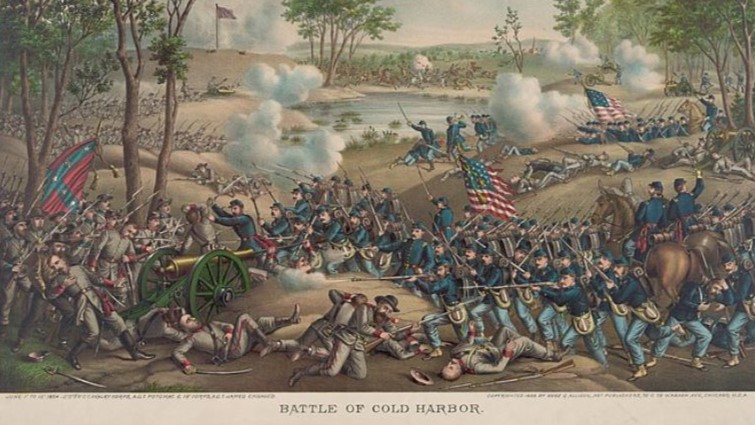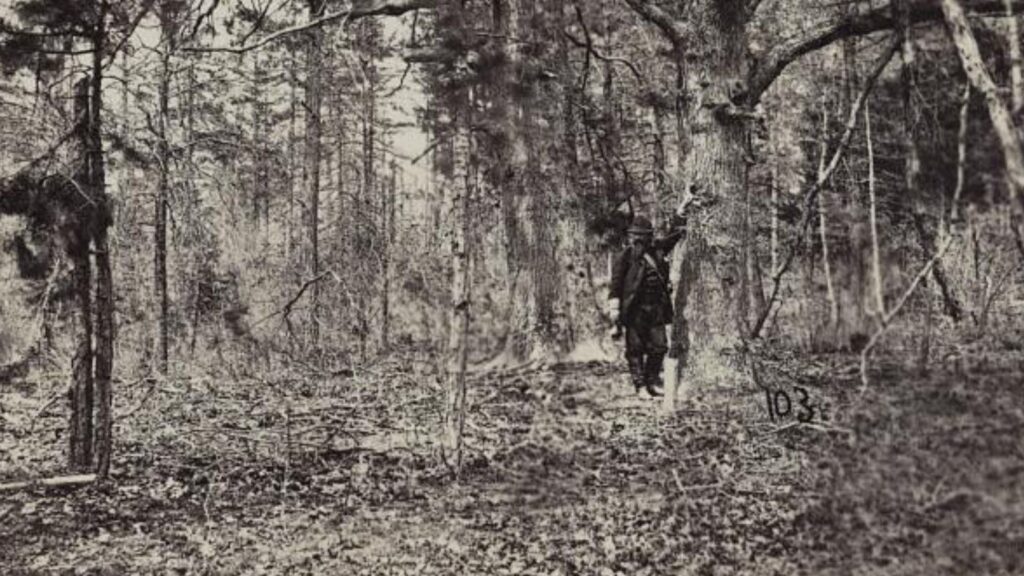As President of the Confederate States of America, Jefferson Davis led the South during the Civil War, which ended in resounding defeat for the Confederacy in 1865. This marked a major turning point in American history, with the abolition of slavery and the upheaval of Southern society.
After four years at the helm of the rebellion, Davis would face a turbulent post-war life defined by imprisonment, declining popularity, and difficulty adjusting to the radically changed Southern landscape.
In this article we explore Jefferson Davis’ post-Civil War life: from treason charges and brief imprisonment to his later pursuits in writing and speaking engagements.
1. Jefferson Davis and His Imprisonment and Release
Captured and Imprisoned
Jefferson Davis found himself a prisoner following the Confederacy’s defeat in the Civil War.
As President of the rebellious Southern states, he embodied the very concept of the Confederacy in the eyes of the victorious Union government. Thus, his imprisonment represented the definitive end of the four-year secessionist rebellion.
Davis was captured by Union forces in Georgia in May 1865, just over a month after Robert E. Lee surrendered the main Confederate army at Appomattox.
Davis was held in a damp and unhealthy casemate, where he was shackled and kept under close guard.
However, public opinion in the North was divided on the issue of his treatment, and he was eventually moved to more comfortable quarters in the fort’s officers’ quarters.
He was allowed visitors, exercise, and even wrote a book while he was imprisoned.
Treason Trial and Pardon
The federal government put Davis on trial for treason in 1868, looking to make an example out of the former Confederate President.
If found guilty, he could have faced execution. However, the trial was ultimately abandoned due to lack of evidence and proper jurisdiction.
After two years behind bars, Davis was released on bail paid by prominent citizens. He waited another two years before receiving a pardon from President Andrew Johnson in late 1868. His case highlighted the quandary facing the nation – whether to punish Confederate leaders harshly or allow reconciliation and healing.
Symbolism of Imprisonment
Davis’s initial imprisonment represented the North’s fury over a bloody civil war that nearly tore the nation asunder.
Seeing the top Confederate official chained ignominiously gave Northerners a great sense of victory and vengeance.
Southerners, meanwhile, viewed him as a martyr.
Release from his cramped cell surely came as a relief to Davis, but it opened the door to a strange new life in the war-torn South.
No longer its leader, Davis would now have to find his place in a region completely transformed by Confederate defeat. Freedom for the former President paradoxically meant freedom for the millions of slaves he had fought to keep in chains.
2. Jefferson Davis’ Post-War Struggles
Difficult Reintegration
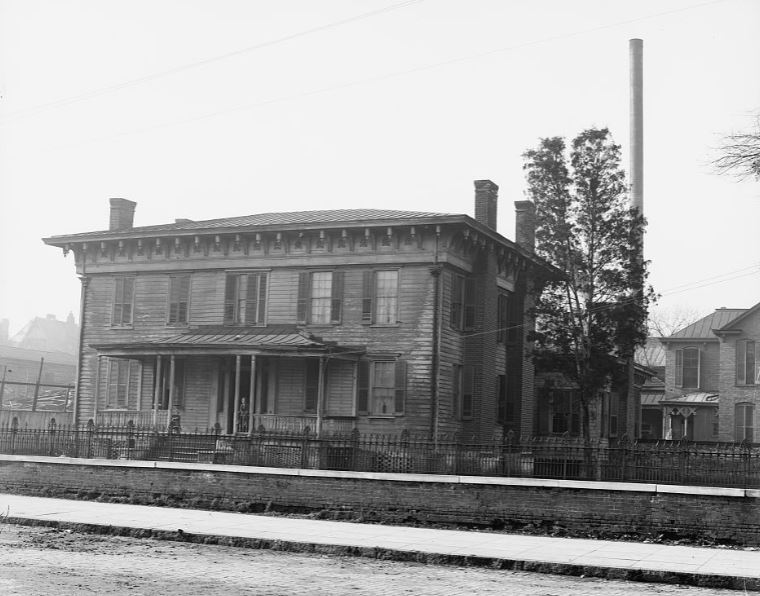
After his release from prison, Jefferson Davis faced major challenges reintegrating into a South that had undergone massive changes during the Civil War and his subsequent imprisonment.
The society he returned to was trying to adapt to the abolition of slavery, which had been the foundation of its economic and social structures. The Confederacy that Davis had led no longer existed.
Having been the embodiment of the Confederate cause, Davis found himself lacking popularity and stature in the post-war South.
The aura that had surrounded him as President of the Confederacy had faded. He was no longer a revered figure able to rally Southerners to the cause.
Pursuing Financial Stability

Lacking wealth after the war, Davis attempted to rebuild his finances through business ventures like life insurance companies. However, these efforts failed to produce much stability.
In 1868, Davis moved to Europe, living in England and France.
But even in Europe, he was unable to find financial success. The continent lacked the commercial opportunities of the booming Northern United States.
Back in the United States, Davis tried to gain income by writing his memoirs and advising insurance companies. But his financial troubles persisted, plaguing his postwar life.
The wealth and prestige he had known before and during the war continued to elude him.
Jefferson Davis Time in Europe
After Jefferson Davis was released on bail in 1867, he spent about two years living in Europe before returning to the United States. His time there can be summarized by several key activities:
Seeking Support for the Confederacy: Davis hoped to gain international recognition for the Confederacy and its cause. He met with various European dignitaries and politicians, trying to garner support for a potential revival of the Confederate movement. However, these efforts were largely unsuccessful.
Travels and Personal Reasons: Davis embarked on numerous travels across Europe, visiting Britain, France, and Italy. These trips served both personal interests and the aim of raising awareness for the Confederacy. Additionally, he sought medical treatment for various health issues during his time abroad.
Writing and Public Appearances: Davis published a book titled “The Rise and Fall of the Confederate Government” during his exile. He also made public appearances and delivered speeches, attempting to defend the Confederacy and its actions.
Social Interactions with Supporters: Many sympathizers of the Confederacy resided in Europe, particularly Britain and France. Davis received financial and emotional support from these individuals, finding a sense of community among them.
Davis’s time in Europe was a mixture of personal pursuits, attempts to revive the Confederacy internationally, and maintaining connections with his past life.
Faded Prominence
Try as he might, Davis could never regain the prominence he had enjoyed as a plantation owner in antebellum Mississippi and then as President of the Confederacy.
The South’s defeat had relegated him to the margins of society rather than the center stage he was accustomed to occupying. His postwar struggles reflected the declining fortunes of the Southern elite.
3. Changed Landscape in the South
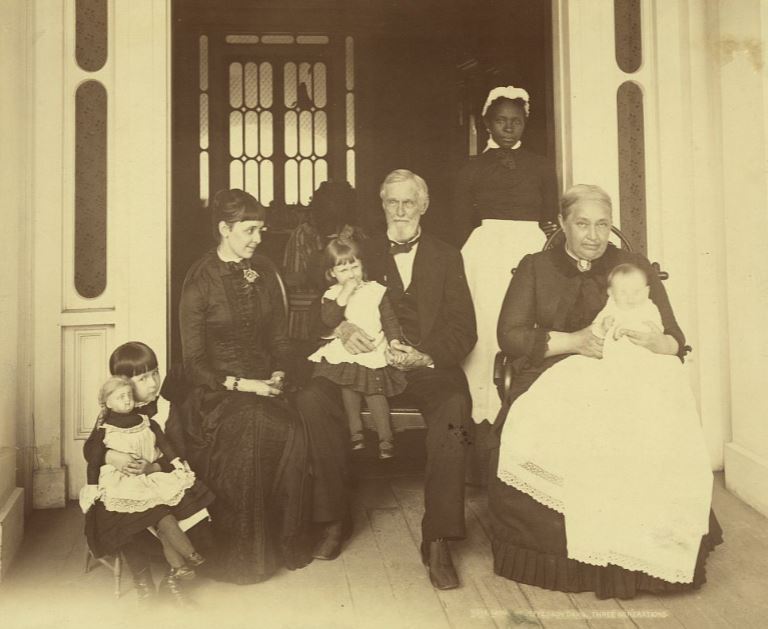
The South that Davis returned to after imprisonment was nearly unrecognizable from the antebellum South he had known.
The abolition of slavery had thoroughly disrupted the Southern economy and society. The plantation-based agricultural system had been stripped of its vital labor source.
While he continued advocating states’ rights and criticizing Reconstruction during his later years, these ideas were met with little sympathy.
Davis found himself out of touch with the post-war period. His ideas seemed antiquated, receiving minimal support.
He was unable to halt the political empowerment of formerly enslaved blacks during Radical Reconstruction.
He tried to regain his former status through business ventures and writing, but Davis would end up living out his remaining years in relative obscurity.
The lasting social changes stemming from Confederate defeat and the end of slavery meant there was no turning back the clock to the elite aristocratic Southern society Davis had known.
4. Jefferson Davis’ Final Honors
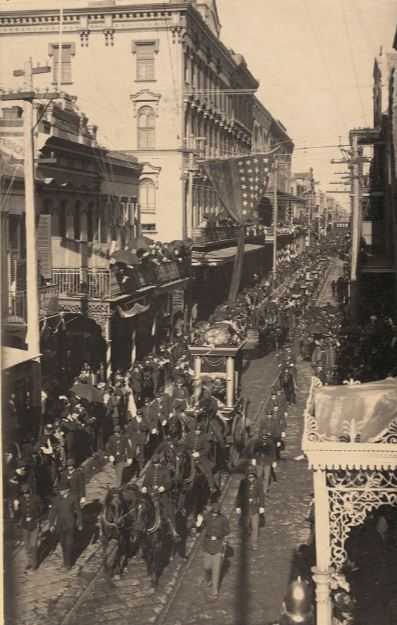
After his death on December 6, 1889 in New Orleans, Jefferson Davis received final honors reflecting his service to the Confederacy.
His funeral was held at New Orleans’ Metairie Cemetery.
Thousands of mourners turned out to pay their last respects, with estimates of the funeral procession numbering over 200,000. Former Confederate soldiers and Southern sympathizers dominated the somber crowds.
The ceremony took place at Christ Church Cathedral, an Episcopal church that had close ties with the Confederate cause. Bishop Leonidas Polk, who had been a general under Davis’s command, was buried at the church after his death in battle.
Davis lay in state at the cathedral in a metallic casket covered by a Confederate flag.
Despite his declined fortunes later in life, the imagery reflected Davis’s enduring status as a symbolic leader of the defeated Confederacy.
The scale of the funeral demonstrated how Davis remained an honored figure in death for many Southerners, evoking the Lost Cause mythology of the noble, defeated Confederacy.
Though the South had moved on, its de facto leader still held a place in public memory.
5. Jefferson Davis and the Lost Cause of the Confederacy
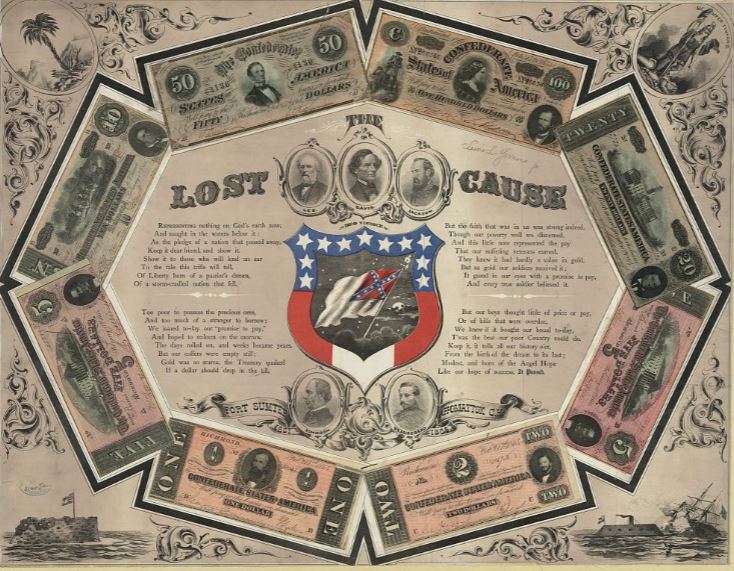
In the decades after the Civil War, Jefferson Davis played a key role in promoting and shaping the “Lost Cause” interpretation of the Confederacy.
This narrative portrayed the Confederate cause as heroic and justified, downplaying the central role of slavery and instead emphasizing Southern ideals like states’ rights and honor.
As a former President of the Confederacy, Davis provided a powerful voice to this lost cause mythology in both his writings and public statements.
In his 1881 book “The Rise and Fall of the Confederate Government,” Davis defended secession as constitutional and denied the Confederacy was founded on slavery.
Such ideas fueled the lost cause narrative that the South had fought a noble but hopeless war to defend its rights and way of life.
Davis also promoted veneration of Confederate heroes like Robert E. Lee and Stonewall Jackson, praising their character and military skill. He depicted them as embodying the virtues of the Old South.
Other works like Davis’s posthumously published memoir “The Papers of Jefferson Davis” in 1971 reinforced his status as a Lost Cause icon.
They allowed him to tell his version of the Confederate story for generations after his death.
Celebrated Public Image
As the 20th century progressed, Davis’s public image became further elevated in Southern popular culture.
His name and likeness appeared on schools, highways, and public buildings across the South. He was celebrated as a patriotic symbol of the Confederacy.
These tributes peaked during the Civil Rights Movement, when defiance of federal government intervention in Southern society reignited Confederate sympathies.
The naming of Jefferson Davis Highway from Virginia to California in the 1920s exemplified this phenomena.
As critics highlighted the racist undertones of this glorification, Davis’s name started being removed from some public spaces in the late 20th century. But Davis remains a complex figure, remembered both as a flawed instigator of the Civil War and as an honored Confederate leader.
Davis helped enshrine the Lost Cause myth of the Confederacy’s righteousness and martial nobility.
His prose, name, and likeness were potent symbols invoked by later defenders of Confederate memory and segregationist policies.
While the history of his life and legacy are contested, Davis undoubtedly influenced the narrative of the Civil War propagated for generations after Appomattox.
6. Jefferson Davis’s complex legacy
Once a respected statesman and leader in the pursuit of Southern independence, Jefferson Davis’s legacy is marred by his unyielding defense of slavery.
Views on Davis diverge, with some regarding him as a hero championing states’ rights, while others perceive him as a symbol of white supremacy due to his support for slavery.
The intricate facets of Davis’s legacy underscore the ongoing debate on how to remember Confederate figures, reflecting the broader impact of the Civil War on shaping American history.
Further Reading
If you enjoyed this article, you may be interested to read more about the American Civil War events, or perhaps read about the how the North won the war or what would have happened had the South won. Read here to find out more about the bloodiest battles of the Civil War. Read here for more general American history.

